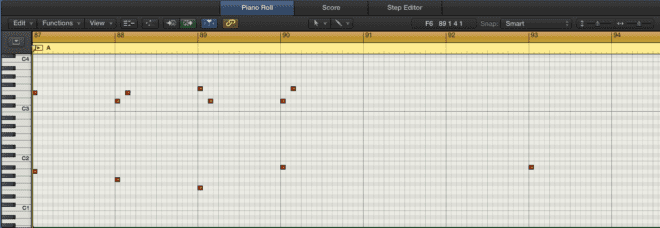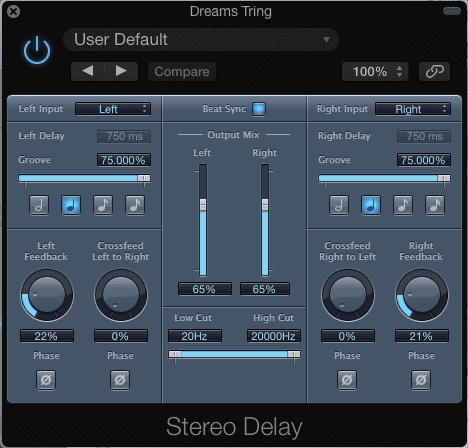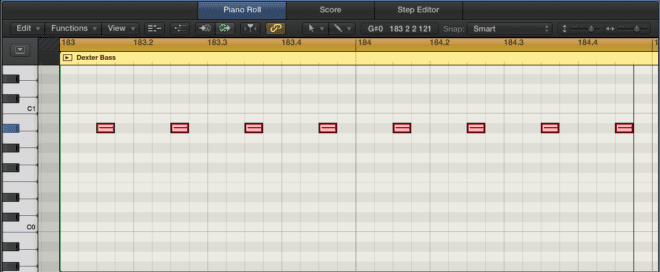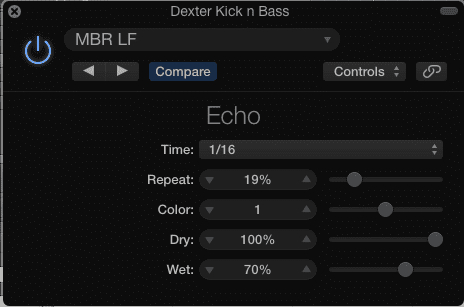“‘Dexter’ sports a deceptively simple groove composed of brain-scratchingly hypnotic sounds.” Dave Clews breaks down Villalobos’s modern classic.
Chilean-German producer and DJ Ricardo Villalobos is universally considered one of the true masters of his genre. It’s no surprise then that ‘Dexter’ should be regarded as something of a minimal classic, originally released as a track on his acclaimed 2003 Alcachofa album on Playhouse, the same German techno label that spawned his debut album back in 1994. It certainly stands up even today as a fine example of Villalobos’s technical and rhythmic sleight of hand, so much so that ‘Dexter’ and its album-mate ‘Easy Lee’ enjoyed a reissue on vinyl in September 2015 via the artist’s own Sei Es Drum imprint.
Structure and mood
Sporting a deceptively simple groove composed of brain-scratchingly hypnotic sounds, this nine-minute mini-epic can be divided into two distinct sections. An extended intro establishes the groove and the overall mood of the track as melancholic, yearning, maybe even slightly twitchy and anxious. Following this, at a very definite point two minutes and 20 seconds into the song, the evocative synth melody pushes through, fading into prominence at front and centre where it continues to dominate until the final reversed outro. Overall (and perhaps partly as a result of the clips from the seminal 1922 horror movie Nosferatu used in one hugely popular YouTube video for the track), ‘Dexter’ has a brooding, captivating darkness about it that’s difficult to ignore.
Regarding the palette of sounds that make up the track, its basic constituent elements are its minimal,129 bpm drum groove, partnered with an insistent blippy bass sequence on the offbeats, giving the rhythm track a sort of galloping feel. The early section features a rain sound effects loop and an “aa-ah” vocal sample, while a twangy synth melody, reminiscent of the glory days of FM synthesis, features prominently in the latter section.
The key of ‘Dexter’ is a tricky one to pin down. Being a minimalist work, there aren’t really any chords as such, but the main implied progression appears to be Am, G, F, Bb. This precludes it being pegged to a single regular key, so deriving a key from the melody alone, based on the pitch of the bass sequence being the root note of Bb, suggests a more esoteric modal key such as Bb Lydian, largely due to the presence of the recurring E natural in the melody. If the closest regular key was Bb major, this raised fourth degree (Eb>E) would identify the Lydian mode as the scale from which the melody is taken.
Drum track
Dominated throughout by the soft, warm, electro-style kick that pounds out an insistent four-to-the-floor rhythm, there are actually several elements woven into the evolving groove, showing that a lot of work has been put into keeping the rhythm track infuriatingly simple. Interwoven with the 4/4 kick in the early part of the track is a second, higher-pitched kick with a similar tone, playing a different rhythm around the main downbeats from about 0:55 up until 2:15.
Aside from the kick drum, at various stages throughout the track, we have an electro-style drum machine closed hat playing eighth notes, some micro percussion sounds that might be shakers, a mutated, variable-pitch open hat-type noise that sounds faintly like a duck, and a collection of distorted handclap samples. All of this is skilfully arranged in a way that never becomes overbearing, reflecting Villalobos’s background as a student of percussion.
Here’s how the programming of the drum track might look and sound for a typical two-bar section, taken from around 4:50 – the halfway point of the tune:
Intro Section
Aside from a brief introductory two-bar sample of what sounds like the bottom half of a grand piano being manhandled down some stairs, the intro is made up largely of kick drum, bass sequence, the “aa-ah” vocal sample (of indeterminate origin) and a long, looped sample of the sound of falling rain. Either that or the shower room at Villalobos’s local gym, but whatever the source, it contributes largely to setting up the melancholy mood of the track. The rhythm track evolves gradually over a two-minute period, up to the point where the rain stops abruptly and the main melody begins to appear from behind the clouds…
Synth part
The brooding, melancholy main synth riff fades in innocuously from about the 2:30 mark onwards and stays front and centre in the mix throughout the track, occasionally played backwards for a bit of variety – in fact, the entire final 30 seconds of the track is reversed. It may initially sound like a meandering melody laced with a little delay, but in fact it’s the delay that’s doing all the work here. Take a look at what the MIDI part (played here by a twangy preset from Native Instruments’ FM8 synth) might actually look like for a part like this:
For the purposes of illustration, we’ve removed all the delay and reverb effects from the preset, so that we can clearly show what the actual pattern of notes in the part is likely to be. Without any effects, the part is pretty minimal, containing just a few sparsely-placed notes. played mainly on the downbeats where the chord changes occur. Here’s how it sounds without the effects:
Now hear what happens when we feed the same part through a tempo-synced, dotted eighth-note delay effect, with a moderately high feedback setting of around 20-25%, and the dry/wet balance set so that the first of the repeats is equally as prominent as the initial note:
This is a clever technique, as it implies a much more complex part than is actually there, through judiciously tweaked effects. Once the melody takes hold, it seems to drift along in a dreamlike, apparently random fashion, but closer scrutiny reveals that there are just two basic motifs that alternate every eight bars, leaving a gap each time around that’s punctuated occasionally by the “aa-ah” vocal sample from the intro.
Bass Sequence
Although I’ve used the term ‘bass sequence’ here for want of a better phrase, this part is actually played in a higher register, although rhythmically it serves the function of a bass part. A further example of the use of delay to form the basis of a rhythmic part, the galloping feel of this, the main musical spine of the track that glues the early section and the main body together, is down to a single Bb note played by a sample of an indeterminate sound, followed by a loud and a soft repeat from a simple 16th note delay. The original note and the first repeat are of equal volume, with the second repeat about half the volume of the first. The feedback setting is kept quite low, so that no other repeats are audible in the context of the track. The original note is triggered on the offbeats, between each successive kick drum beat, so that the quieter repeat is actually masked by the kick drum. When played together with the kick, although the last repeat is masked, the fact that the part is made up of a delayed single note, rather than multiple played notes, gives it a bouncy, ‘rubber band’ effect that lends the groove a more fluid feel.
Here’s the MIDI placement for the trigger note:
And here’s what it sounds like with no effects:
Here’s the setting for the delay that gives it the ‘bounce’ effect:
And here’s what the effect sounds like when applied:
Add the kick drums to this and, as if by magic, you get the essential backbone of the entire track. Minimalism at its best.







04.31 AM
WOW!!!
04.28 AM
thanks for the breakdown. i don’t have the ear to do these myself, so the detailed explanation of each part is very helpful.
08.03 PM
In the echo from logic repeats is the same with feedback?
04.25 PM
So? What’s new? Really!
03.45 PM
That drum pattern (although simple) is bang on. What type of kick is used? Would be good to know sourcing of your samples. Thanks 🙂
04.13 PM
That’s so cool how they’ve included the elements on their own and you can slowly see the progression of the tune
12.16 AM
love this track and great to see the structure behind!